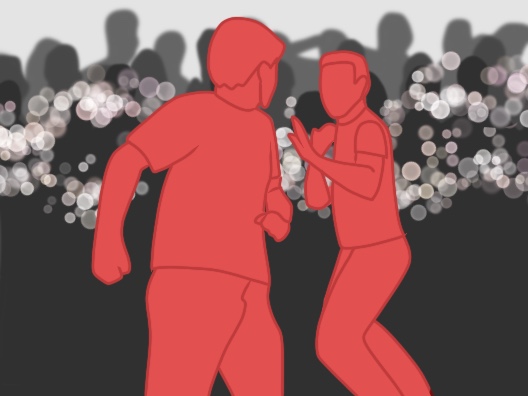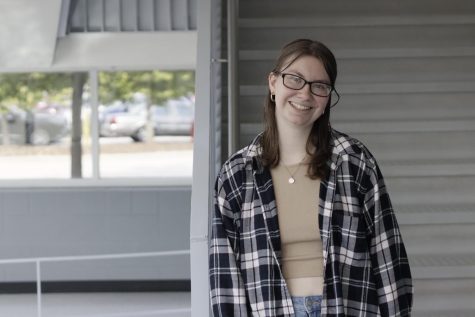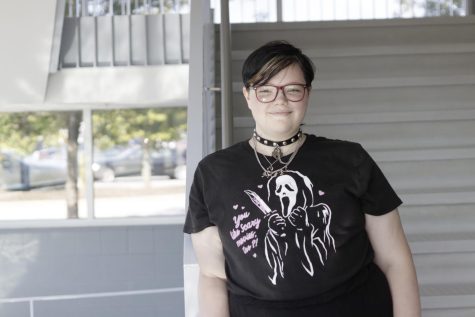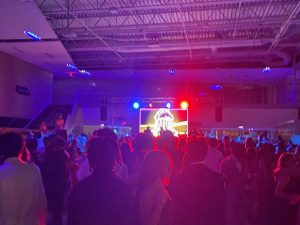Administrators concerned over increase in fights

Metea Valley administration takes precautions to prevent fighting and violence in school.
October 26, 2021
Metea Valley administrators have seen a rise in verbal altercations and physical altercations this school year with 28 fights happening so far this year. Two years ago, there were only six fights reported over the whole school year.
With students returning back to the building after a whole school year of learning at home, some students are still adjusting to normalcy. Violence is not tolerated at Metea and results in consequences. Metea staff encourage students to follow L.I.F.E. statements, especially foster positive relationships with one another. Students are learning how to communicate with each other, and are adjusting to the 3,000 students and hundreds of staff members that work in the building.
More students are getting into fights compared to past two years ago according to Principal Dr. Darrell Echols.
“We have also been reinforcing the Metea L.I.F.E. statement and reminding everyone that three things will help us get through this difficult time, and that is kindness, understanding, and gratitude,” Echols said.
According to Echols, since the school year started, there have been many verbal altercations between students. There have been 28 physical altercations either during dismissal after the last bell, or during the school day.
Along with Echols, the deans are in charge of discipline and are handling the situations. Assistant Principal Daniel DeBruycker mentioned that he has dealt with a few cases as well.
“The consequence of fighting can range from a lot of different ways, the longest suspension is up to 10 days or the [recommendation] to expel,” DeBruycker said.
In the Metea handbook, discipline is based on how many people were involved, and if the student who was fighting was able to calm down and walk away from the fight. Any physical damage occurred to either property or a person is a major factor in determining the discipline actions. Immediately after getting into a fight, in-school suspension or out of school suspension is given to the student and can range from one to 10 days depending on the severity of the physical altercation.
“There is a lot of stress, anxiety, and things that are driving through people and emotions that people have not had to work through in the last year and a half, or being in a building with 3,000 moving parts on a consistent basis,“ DeBruycker said.
Outside factors like social media, trauma, or problems at home contribute to aggressive behavior. Adjusting to the school again, along with new rules in place that we have to follow such as the mask mandate, and social distancing is also a factor in the cause of these altercations, Echols said.
“People have forgotten how to interact with one another,” Echols said.
With the pandemic causing a year of remote learning, it created a gap between learning, communication, and socializing. According to DeBruycker, 40% of the students experiencing high school for the first time are new to the environment and students are still adjusting.
“There is support from either social workers, or 360 Youth Services,” Echols said. ”We make sure that kids have an opportunity to have a conversation and learn from the experience.”
A variety of resources are available to students who are feeling violent, overwhelmed, or even scared of their safety caused by another student making them uncomfortable. Metea counselors, social workers, and teachers are here to help students adjust to school, so they do not feel like they need to participate in violent behavior.
“I heard numerous students saying, ‘What are you doing? Do not do this. Why are you doing this? Calm down.’ And I think this is a great way to handle a fight rather than grabbing their phone and recording it,” DeBruycker said.
DeBryucker discourages spectators against spreading videos and more news about the fights because it creates crowding which has been a big issue with the pandemic.
Everyday, Echols reminds students that there should not be any gathering after school if students are not involved in afterschool activities or are being supervised by adults. This helps to remind students to disperse after school and discourages fights on school property.
“One thing that we are doing is we have increased our supervision. We have moved everything from the second flood to the first floor so that we have more eyes on the situation,” Echols said.
From last week onwards, students are no longer allowed to eat upstairs due to the trash and food left in the locker banks as well as limited supervision of students.
In addition, Echols stated that the administration monitors some social media because it plays a big factor in why these alterations are happening. With easy access to social media, students have the ability to send an antagonistic message to someone. According to Echols, this is one of the causes of violence.
According to Echols, getting students to talk to a trusted adult or counselor and getting the help they need is an important step in preventing these fights. If they do not listen, then contacting the nearest adult about what the student is planning to do is also beneficial. Students want to protect their friends, not encourage them to take action.
Administrators also believe that students who witness a fight should not record it. Instead they should contact the nearest adult to stop the fight.
“Ninety percent of the time, there is a lot of remorse and they feel bad, and do not want to put themselves in that position anymore,” DeBruycker said.









